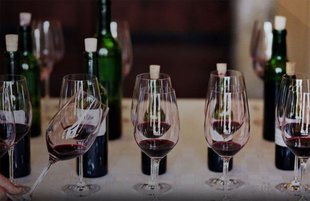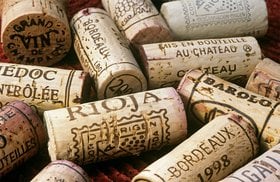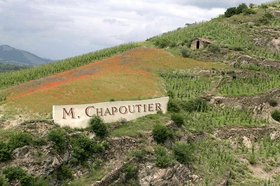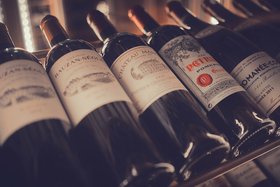Chateau Margaux, Bordeaux: Winemaking, 10 Best Wines, Prices (2025)
Chateau Margaux (pronounced marh-go) is a legendary wine estate located on the left bank of the Garonne estuary in the Margaux appellation.
This storied estate is one of the five Bordeaux First Growths declared in the 1855 Bordeaux Classification of the Napoleonic era.
This famed Palladian chateau has withstood the test of time - from surviving the French Revolution to the Bordeaux market crash of the 70s.
Nevertheless, it continues to mesmerize legions of wine lovers worldwide!
In this article, we’ll explore the iconic wines of this great wine estate, its best bottles, and their investment potential. We’ll also take a look at the estate’s history, terroir, and winemaking practices.
Further reading
- Discover all about the Fascinating Bordeaux Wine - the Wine Region, 10 Best Wines, its Terroir, and Winemaking.
- Also, explore 10 Luscious Cabernet Sauvignon Wines to buy in 2024.
The Iconic Wines of Chateau Margaux
Chateau Margaux produces four wines — three reds and a white.
1. Grand Vin du Chateau Margaux
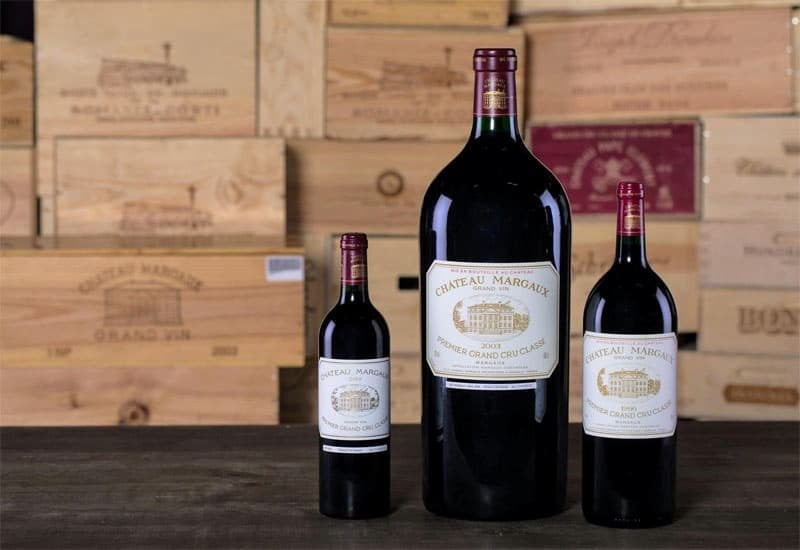
This is Margaux’s flagship wine made from a blend of Cabernet Sauvignon, Merlot, Petit Verdot, and Cabernet Franc.
The Grand Vin is long-lived and has rich aromatic complexity. Its finesse, elegance, and complex spice notes perfectly reflect the brilliant terroir of the Margaux AOC.
Chateau Margaux only produces around 130,000 bottles of this wine annually.
2. Pavillon Rouge du Chateau Margaux
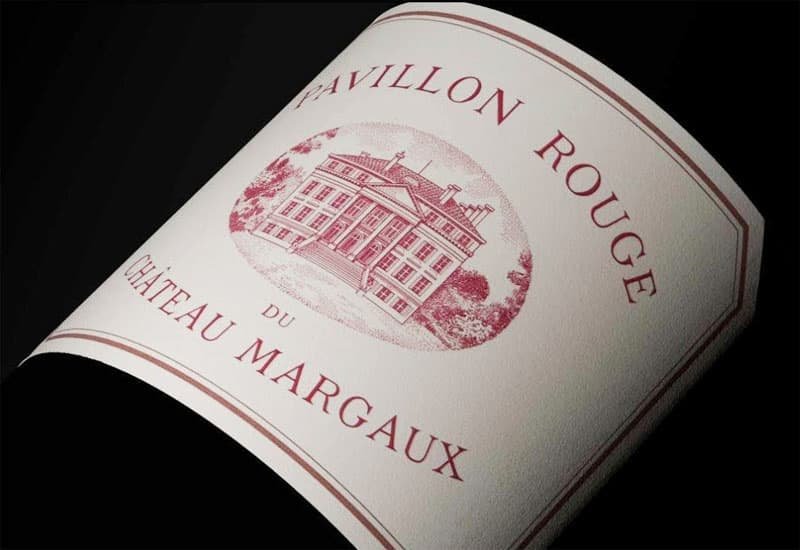
The Pavillon Rouge is Margaux’s second wine, and was initially named “Château Margaux 2nd wine.” It only became “Pavillon Rouge du Château Margaux” in 1908.
This Chateau Margaux wine is loved for its dark fruit flavor, spice hints, and supple tannin.
Chateau Margaux produces about 100,000 bottles a year.
3. Margaux du Chateau Margaux
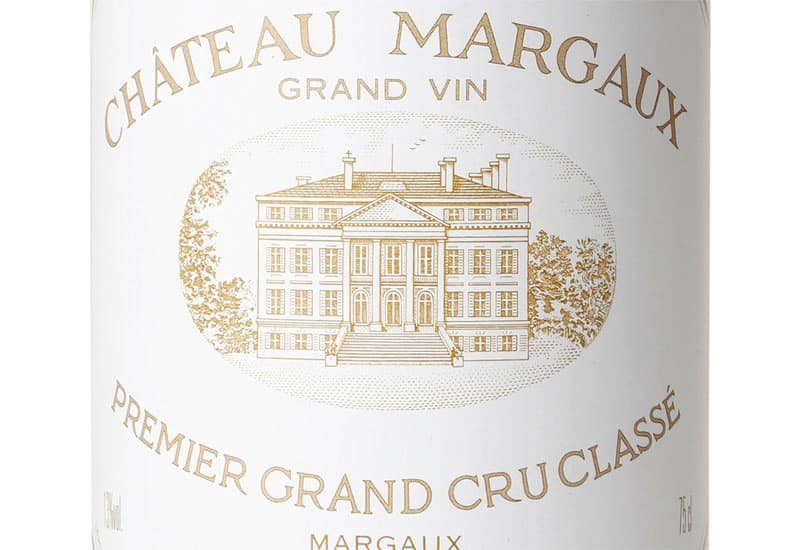
The third wine, Margaux du Chateau Margaux, was introduced with the 2009 vintage.
It’s less complex than the Grand Vin and second wines and reflects the purity of fruit with subtle smoky notes.
It’s a limited production wine with around 40,000 bottles produced annually.
4. Pavillon Blanc du Château Margaux

The white Chateau Margaux wine was sold in the 19th century as “Château Margaux vin de Sauvignon.” The current name “Pavillon Blanc du Château Margaux” has only been on its label since 1920.
This magnificent white wine is 100% Sauvignon Blanc and offers yellow fruit notes with a bright citrus touch.
Chateau Margaux only produces 10,000 bottles of this white wine annually.
10 Sumptuous Bottles of Château Margaux to Buy in 2024
Here are some fine bottles to collect - for long-term cellaring and gifting!
- 1981 Chateau Margaux
- 2016 Château Margaux
- 2015 Château Margaux
- 2015 Pavillon Rouge du Château Margaux
- 2010 Pavillon Rouge du Château Margaux
- 1990 Château Margaux
- 2015 Pavillon Blanc du Château Margaux
- 2010 Pavillon Blanc du Château Margaux
- 2011 Margaux du Château Margaux
- 2013 Margaux du Chateau Margaux
1. 1981 Chateau Margaux ($581)
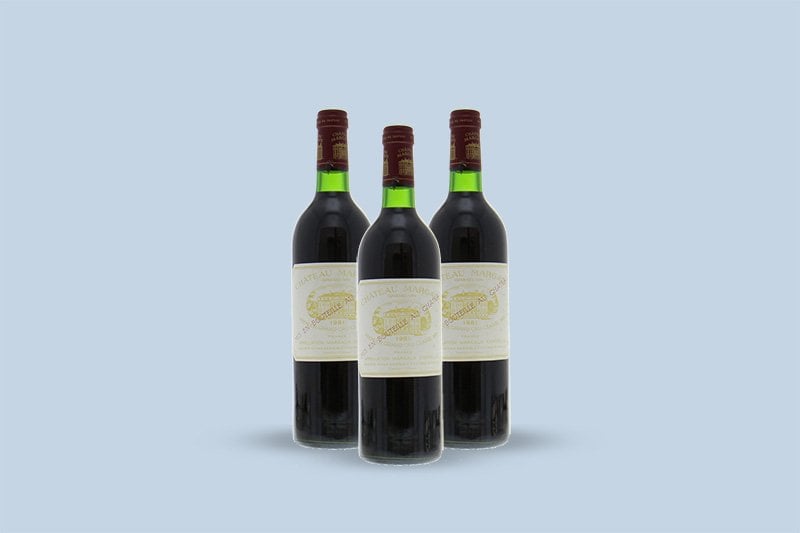
It is an outstanding wine, showcasing a dark ruby or purple color in the glass.
The aromatics pack ripe cassis fruit, spicy vanillin oakiness, and violets, while the palate is medium-bodied, concentrated, tannic, and extremely long. Drink between 1990-2030.
2. 2016 Château Margaux ($826)
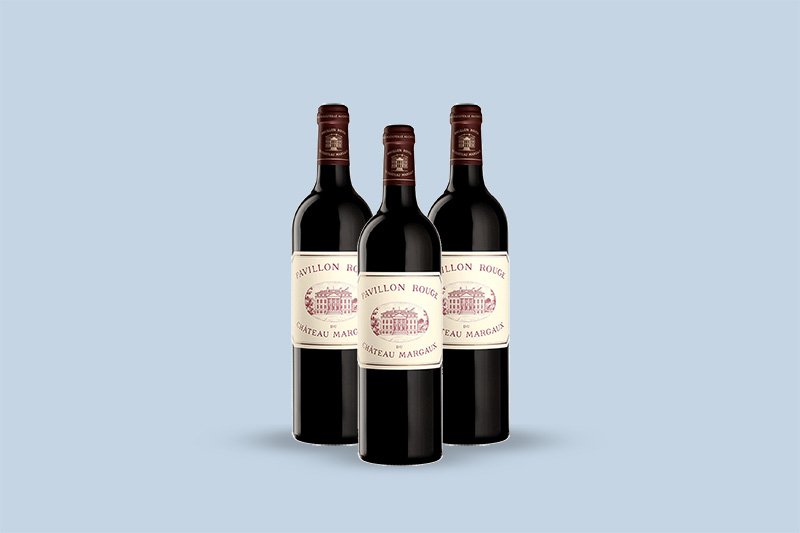
The 2016 Margaux packs intense scents of black cherries, blue fruit, crushed violet petals, and a hint of vanilla. The mineral-driven palate is medium-bodied with fine tannin and acidity. Drink between 2024-2066.
3. 2015 Château Margaux ($2,029)
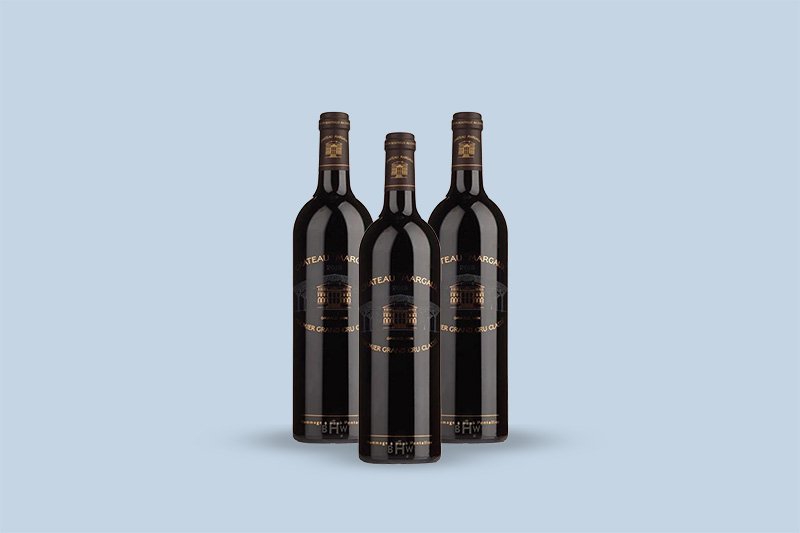
The outstanding 2015 vintage is a medium to full-bodied wine featuring seductive notes of crushed blackberries, cassis, and black forest cake with touches of the forest floor. Drink between 2023-2050.
4. 2015 Pavillon Rouge du Château Margaux ($274)

The 2015 Pavillon Rouge is silky, medium-bodied, and wonderfully fragrant. Find notes of plum preserves, mint, spice, cedar, and white pepper laced together in a racy wine with incredible intensity and persistence. Drink between 2019-2039.
5. 2010 Pavillon Rouge du Château Margaux ($279)
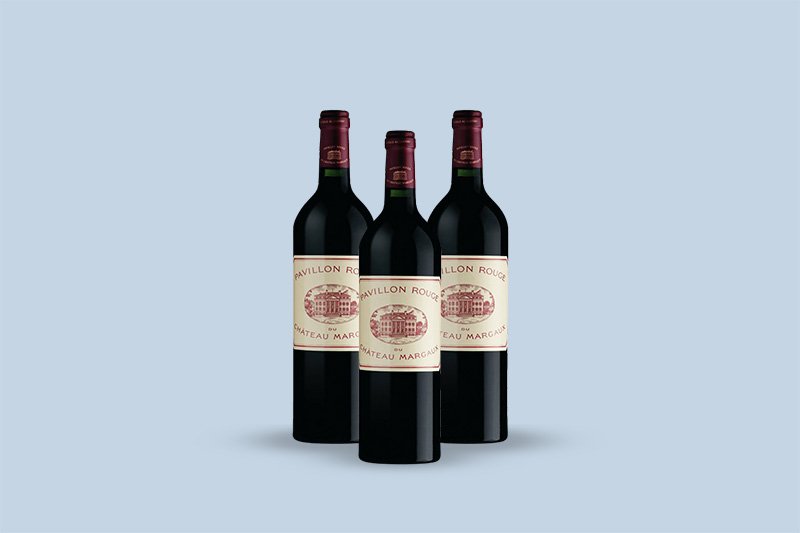
The delightful 2010 Pavillon Rouge has an elegant, defined bouquet of wild strawberry, blackberry, and cedar aromas. A medium-bodied palate features supple tannins and the flavor of blue fruit with just a touch of salted licorice. Drink between 2018-2036.
6. 1990 Château Margaux ($1,557)
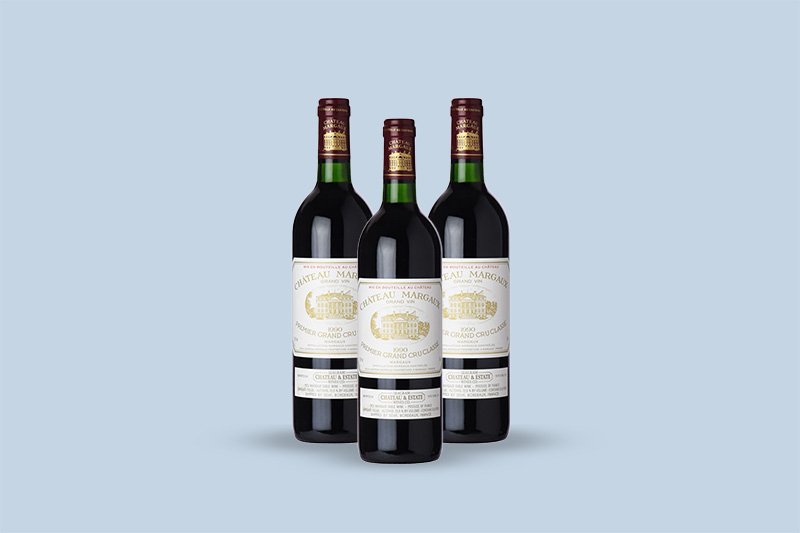
The 1990 Margaux has a gorgeous, ethereal bouquet with sumptuous red berry fruit, leather, camphor, and licorice. The palate is soft, sensual with incredible depth and finesse. Drink between 2000-2040.
7. 2015 Pavillon Blanc du Château Margaux ($326)

The 2015 vintage has a pure bouquet of passion fruit and guava. A well-balanced palate features the flavor of orange pith and mango. Drink from 2019 to 2035.
8. 2010 Pavillon Blanc du Château Margaux ($304)
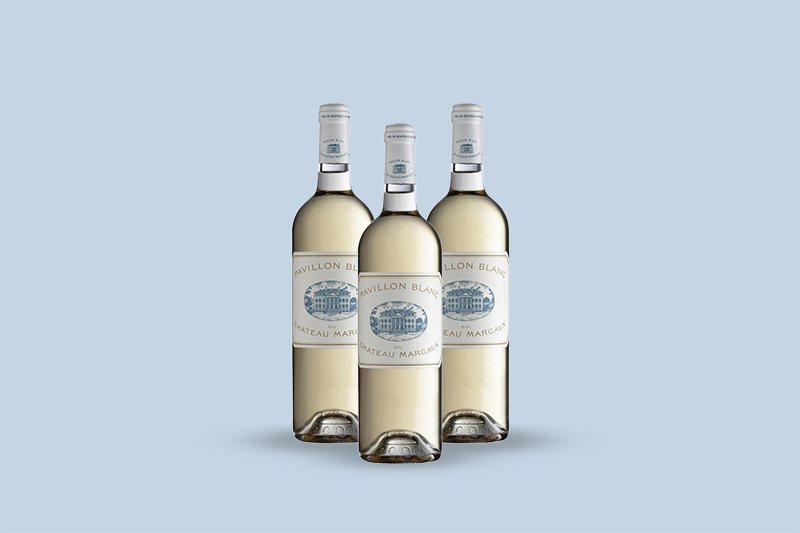
Experience subtle hints of pineapple, lemongrass, orange blossoms, and crushed rock in this medium-bodied wine made from 100% Sauvignon Blanc. Drink between 2012-2028.
9. 2011 Margaux du Château Margaux ($582)
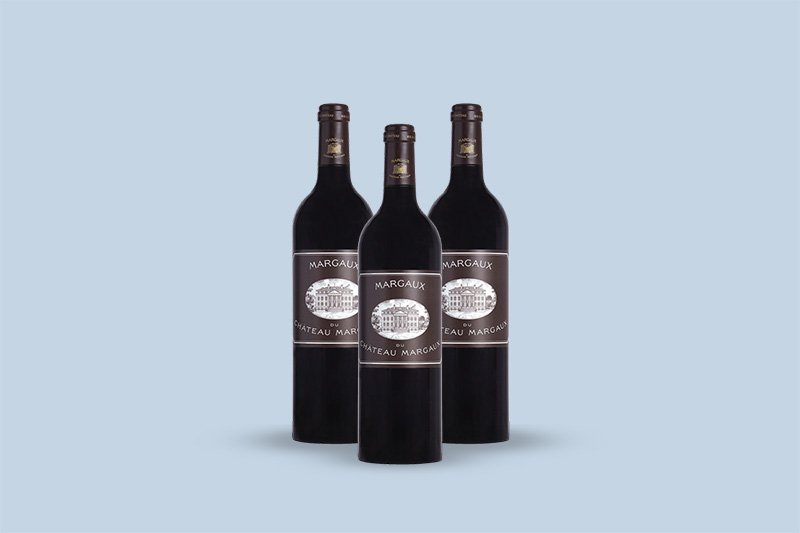
The 2011 vintage features graphite, strawberry, blueberry, and plum notes. It is light on the palate with red fruits, crushed limestone, and subtle tobacco, balanced and velvety with a structured mouthfeel. Drink between 2018-2038.
10. 2013 Margaux du Chateau Margaux ($179)

It is a fresh, fragrant, and smooth wine with mouth-watering red fruit aromas and subtle oaky notes on the palate. Drink now.
Investing in Château Margaux

Chateau Margaux’s Grand Vin reaches its peak maturity after 18 to 60 years of aging. The estate’s second wine, Pavillon de Rouge, can also age for 30-40 years.
Their ability to develop complexity with age is why these wines are praised highly by wine critics like Robert Parker and prestigious wine magazines like Wine Spectator and Wine Advocate.
But the wines’ longevity is not the only reason why serious wine collectors admire them.
The winery’s limited production makes them scarce and difficult to source. That’s also why Margaux wines command high prices at auctions and show commendable price appreciations.
A good example is the Margaux 2015, released in June 2016 at $454 per bottle. By January 2021, this vintage averaged at $1,880+ per bottle as it approached its drinking window - more than quadrupled in five years!
Another vintage that showed eye-popping price appreciation is the 1900 Chateau Margaux bottle. It grew from $13,274 in 2020 to $23,313 in 2021, increasing by 75%.
Some legendary vintages to look out for are 2015, 2010, 2009, 2005, 2003, 2000.
Finding sought-after Château Margaux vintages, or any en primeur wine for that matter, isn’t an easy task.
A trusted wine investment company like Vinovest can help you select the best vintage, source an authentic bottle, and store it in temperature-controlled warehouses. Vinovest can also help you sell it for a potentially attractive profit!
How To Serve Chateau Margaux Wine
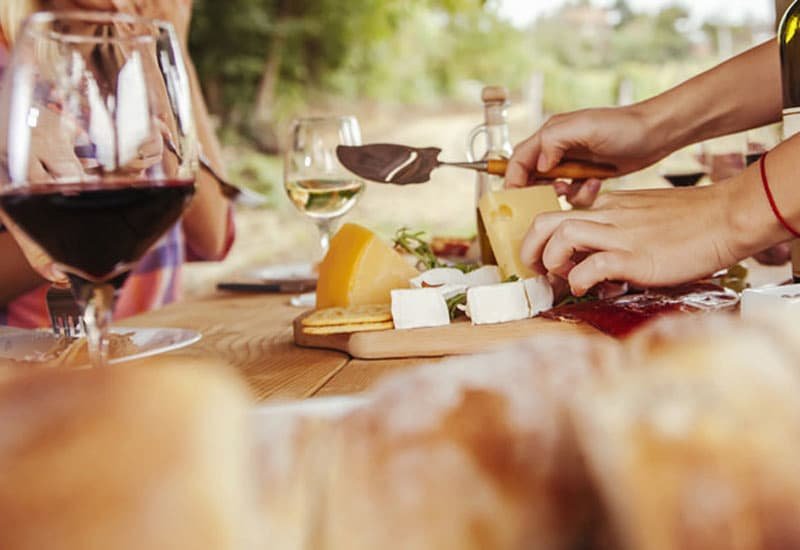
Decant a young Château Margaux red wine for 3-6 hours before serving to help the sediment settle down.
To get the best of its complex flavors, serve it at 15oC-16oC with roasted, braised, or grilled meat dishes, Asian dishes, rich fish like tuna, or mushrooms and pasta.
The Château Margaux white wine should be served at 10oC-11oC with seafood, sushi or sashimi, veal, chicken, pork, and cheeses.
Let’s dive in a little deeper and discover how it all began.
The Fascinating History of Château Margaux

Wine production started in Chateau Margaux in the 16th century, when the Lestonnac family acquired this historic estate.
Here’s a look at some historical milestones:
- 1572: Château Margaux was born when its owners restructured the property into a wine estate, as the focus shifted from cereal crops to vine cultivation.
- Early 18th century: A Margaux winemaker named Berlon was the first to vinify red grapes and white grapes separately, spurring the beginnings of modern vinification.
- Mid 18th century: The 1771 vintage was the first “claret” to show up in Christie’s catalog.
- 1787: Thomas Jefferson visited Bordeaux, noting Margaux as one of the “four vineyards of first quality.”
- 1815: The Marquis de la Colonilla hired Bordeaux architect Louis Combes to build the iconic chateau we know today. Combes’ work of art is often nicknamed the “Versailles of the Médoc” and is a rare example of the neo-Palladian style.
- 1855: In 1855, Chateau Margaux became one of the four Bordeaux estates to achieve the First Growth “Premier Grand Cru Classe” status in the official 1855 Bordeaux classification.
- 1977: André Mentzelopoulos acquired the estate from the Ginestet family after the Bordeaux market crashed in the 1970s. He began the renaissance of Château Margaux.
- Corinne Mentzelopoulos continued her father’s work when he died in 1980, turning Château Margaux into a billion-dollar business.
Today, Corinne’s daughter, Alexandra Petit Mentzelopoulos, and her son, Alexis Leven Mentzelopoulos, have joined her in the venture, making Margaux one of the most influential brands in the fine wine marketplace.
The Vineyards of Château Margaux: Terroir And Grapes Grown

Situated in the historical Margaux appellation, the first Bordeaux region cultivated for vineyard use, Château Margaux houses unique terroir that defines the remarkable quality of its wines.
Its stunning vineyard has a complex combination of soils, consisting of chalky clay under a top layer of coarse and fine gravel.
202 acres of the total 650 acres is dedicated to the red grape variety Cabernet Sauvignon, which accounts for 75% of the plantings. Merlot makes up 20% of the plantings, and the remaining 5% is Cabernet Franc and Petit Verdot.
A separate 30 acres are planted with Sauvignon Blanc, which goes into the estate’s renowned white wine.
Let’s look at Chateau Margaux’s winemaking.
Winemaking at Château Margaux

In 2015, the estate built a new winery, “Nouveau Chai” for its red and white wine production.
Red wine fermentation occurs in a combination of stainless steel and oak vats. Chateau Margaux uses both the free-run wine and press wine in their blends.
Press wine is obtained from the grape skins that form the marc (remains of the grape) that haven’t been exhausted by vinification. The marc can produce a rich, tannic, bold, and fleshy wine through very gentle pressing.
The free-run wine undergoes malolactic fermentation in vats and the press wine in barrels.
Chateau Margaux’s white wine is fermented in stainless steel tanks with no malolactic fermentation.
The wines are placed in barrels for aging, typically in new French oak. The red wine is aged between 18 to 24 months and white wine for 6 to 8 months.
Interestingly, Château Margaux is one of the few Bordeaux estates with their own cooperage, producing most of the oak barrels used to age their wine on-site.
After aging, the wines are blended into the different Château Margaux wines and bottled.
What’s special about Chateau Margaux bottles?
Château Margaux bottles have been laser-etched since 1989 to prevent counterfeits.
In 1995, the identification became individual, so the journey of each bottle could be traced. And in 2011, Château Margaux added a bubble code to their bottle cap to strengthen their anti-counterfeit measures.
Here are a few interesting facts about Chateau Margaux.
5 More Interesting Facts on Château Margaux

Château Margaux comes with a fair share of exciting stories!
1. The Mound of Margaux
Medoc is primarily flat. So, Margaux, with its elevation, was known as “La Mothe de Margaux” or “the mound of Margaux” in the 12th century. Interestingly, Château Margaux is also the only Bordeaux wine to share its name with its appellation.
2. Most expensive wine bottle ever broken
In 1989 New York, wine merchant William Sokolin brought a bottle of Château Margaux 1787 to dinner. It was believed to have once belonged to Thomas Jefferson.
Sokolin walked into a metal-topped tray table, knocked two holes in the back of the bottle, destroying its precious contents. Luckily it was insured at $225,000 (Sokolin valued it at $500,000+, but there was no interest.)
3. Inspired an opera
Not many wines can claim to have a close connection to the world of opera, but Château Margaux can.
It inspired an opera (a comic zarzuela) of the same name, composed in 1887 by Manuel Fernandez Caballero.
4. Going organic
Château Margaux practices mostly organic methods in its vineyards. The vine plantings for the 2017 Grand Vin vintage were the first to be farmed 100% organically at Chateau Margaux.
5. Château Margaux 2015 vintage is extra special
The 2015 Grand Vin is exceptional in several ways, apart from being a great vintage.
It celebrates Château’s 200th architectural anniversary and the inauguration of new buildings designed by Pritzker Prize-winning architect Norman Foster.
It was the last vintage of winemaker Paul Pontallier and is a tribute to him. Paul Pontallier was Château Margaux’s longstanding technical director, who passed away in March 2016.
The 2015 vintage was released in June 2016, the bottle decorated with a beautiful silk-screen print depicting the new building, affixed to the glass in place of the usual labels.
Add Rare Elegance to Your Collection with a Bottle of Margaux
Château Margaux is considered one of the most sensual and “feminine” of the Bordeaux First Growths, redefining class and sophistication!
Whether for tasting or investing, let Vinovest help you buy your fine wine bottles from across the globe - be it France or New Zealand.
Sign up with Vinovest today to start an impressive portfolio!
